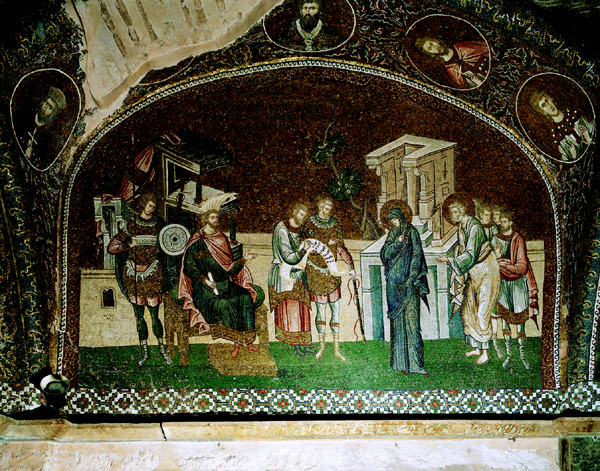Image Details

Alinari/Art Resource, NY
Counting heads. Census-takers add the names of Mary (in blue) and Joseph (at far right, in white) to their long scroll, in this mosaic from the Istanbul church Kahrie Cami (compare with image of Scrovegni Chapel fresco). In the days of Emperor Augustus, the Gospel of Luke records, a decree went out “that all the world should be registered.” So Joseph “went from the town of Nazareth in Galilee to Judea, to the city of David called Bethlehem, because he was descended from the house of David. He went to be registered with Mary” (Luke 2:1–5).
Mary may not have been Joseph’s only traveling companion, however, as is reflected in the Byzantine mosaic: Behind Joseph a cluster of boys—Jesus’ brothers—patiently wait for their parents to finish their business. Although Luke makes no mention of the boys’ presence at this event, they do appear in a late-second-century version of the story from the Protoevangelium of James, a gospel book that did not make it into the New Testament despite its popularity in ancient times. According to Proto-James, when Joseph heard of the census, he immediately declared: “I shall enroll my sons, but what shall I do with [Mary]?”
